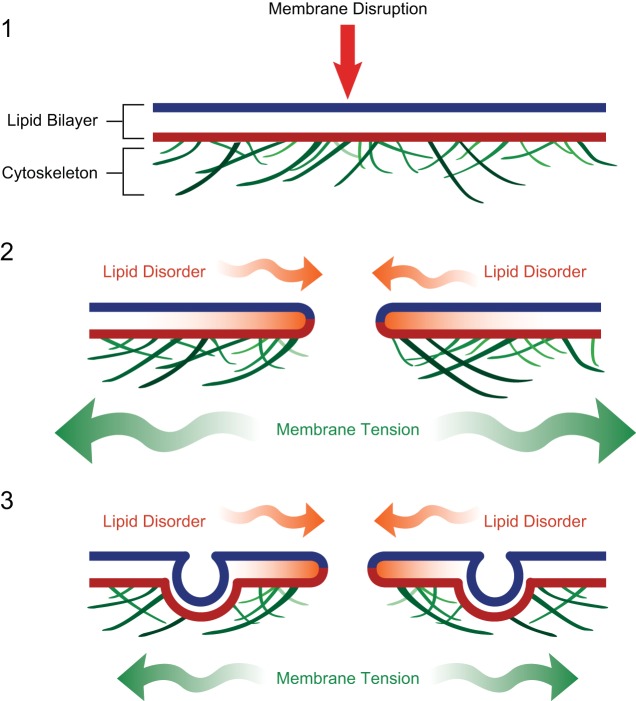Figure 2.
Calcium-activated exocytosis reduces membrane tension and promotes spontaneous repair driven by lipid disorder for injuries hundreds of nanometers in diameter. With larger injuries, the opposing force of membrane tension exceeds the resealing forces of lipid disorder at the edges of the disruption, negating the driving forces of spontaneous membrane resealing. Eukaryotic cells have been shown to utilize calcium-activated exocytosis to reduce membrane tension and promote repair via lipid-disorder driven attractions. The reduction in membrane tension is likely due directly to the addition of phospholipids to reduced lipid packing, as well as due in part to the cytoskeletal remodeling associated with vesicular transport at the plasma membrane.

